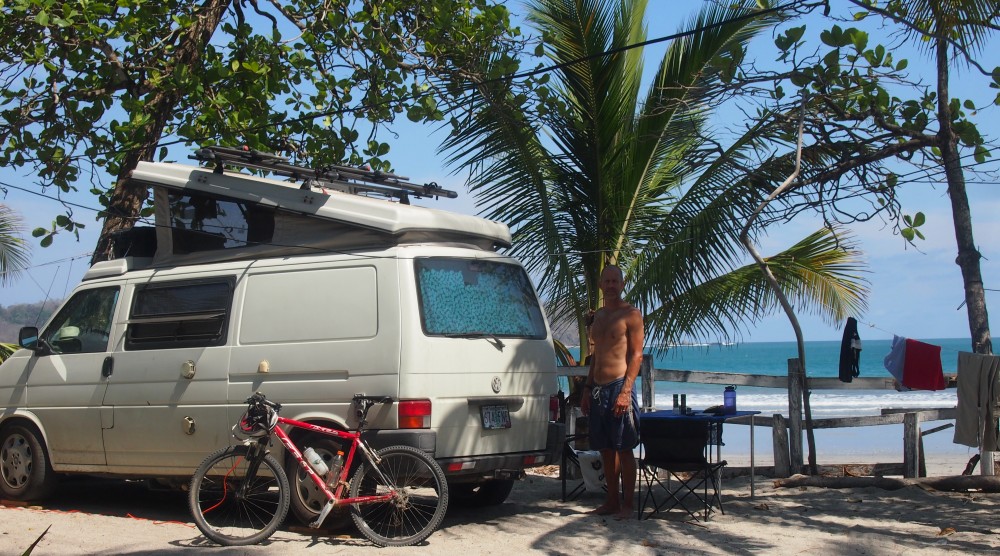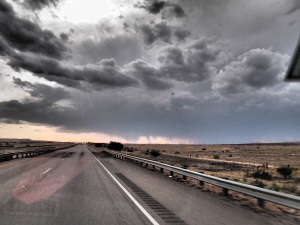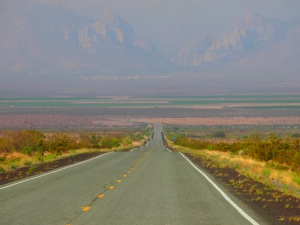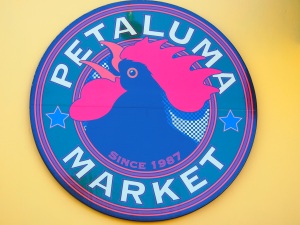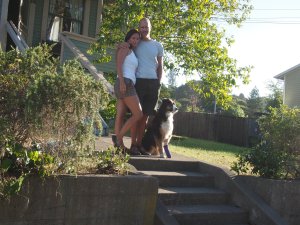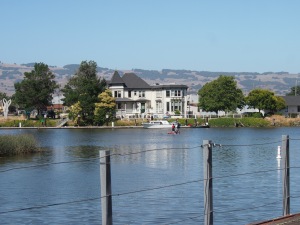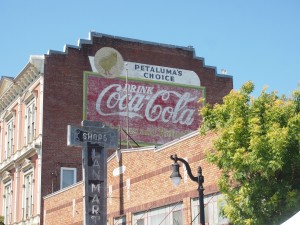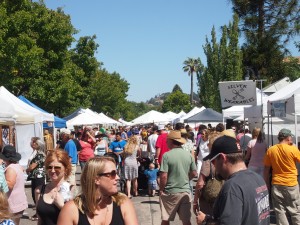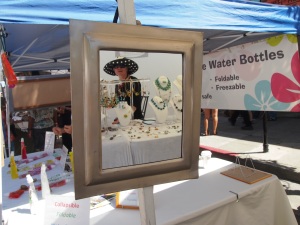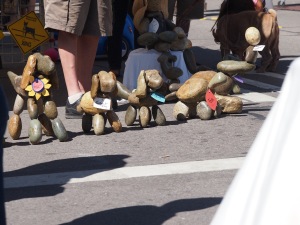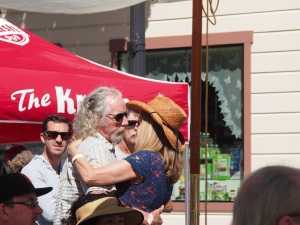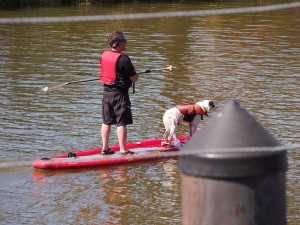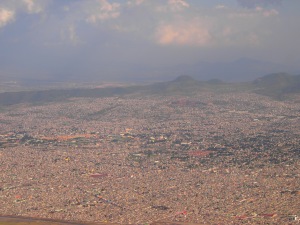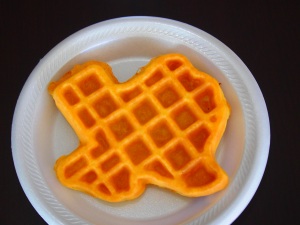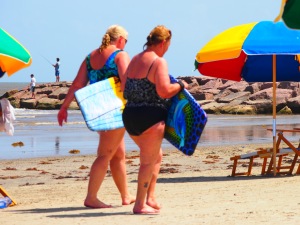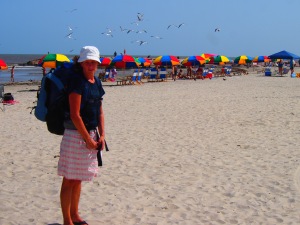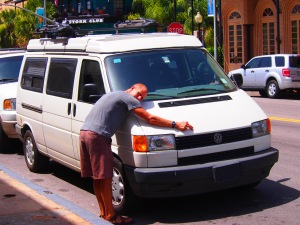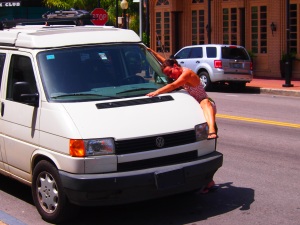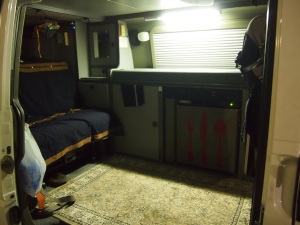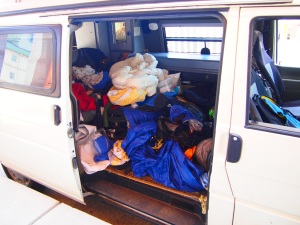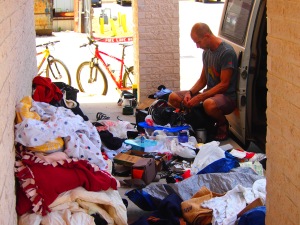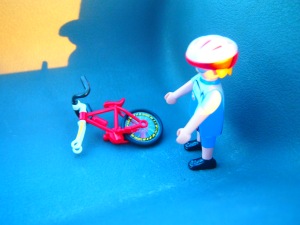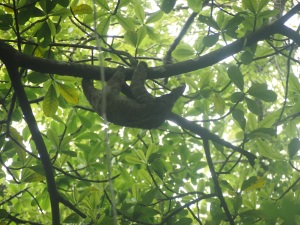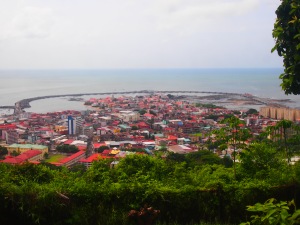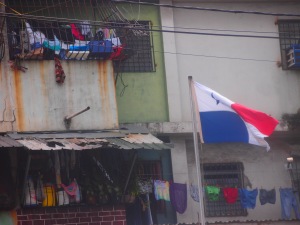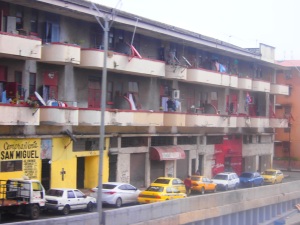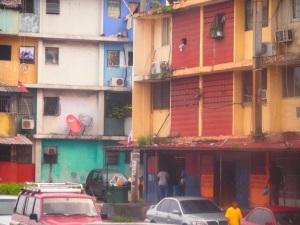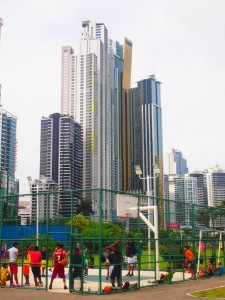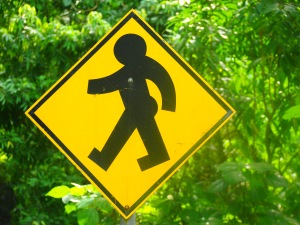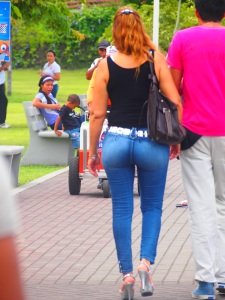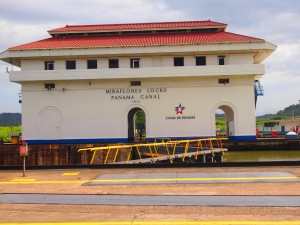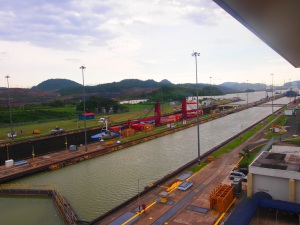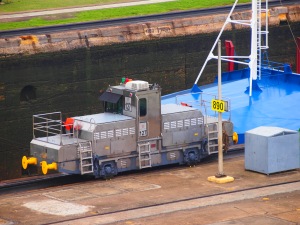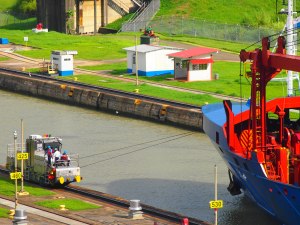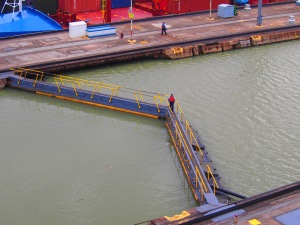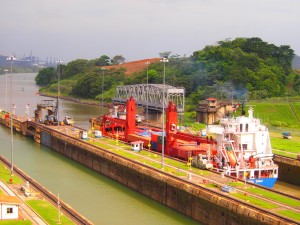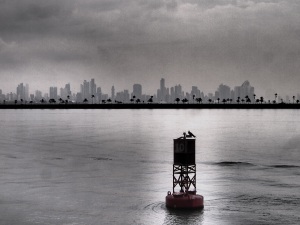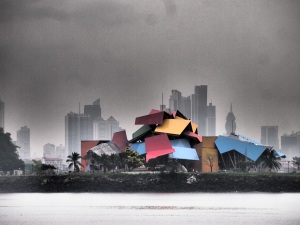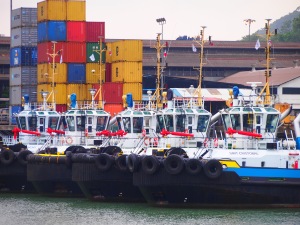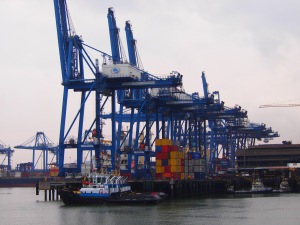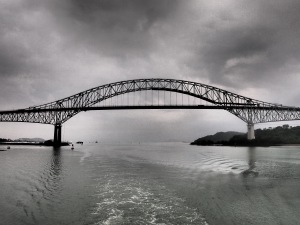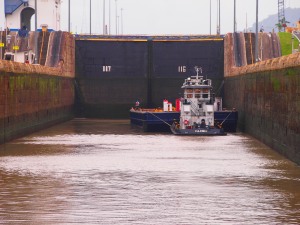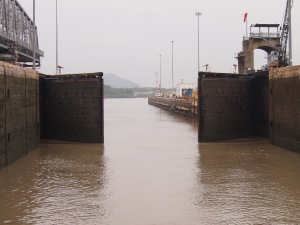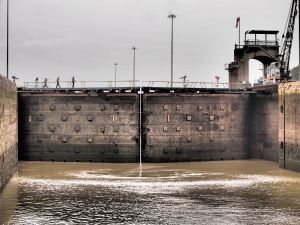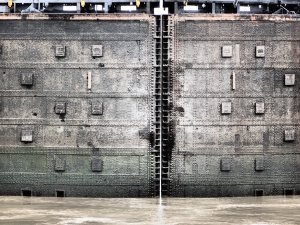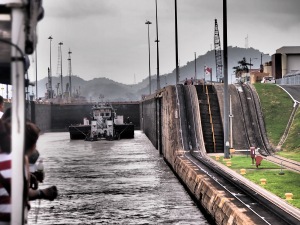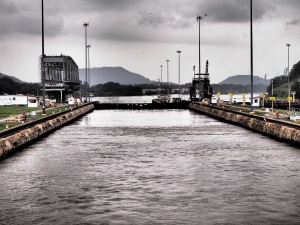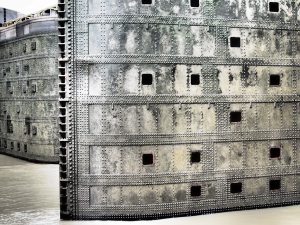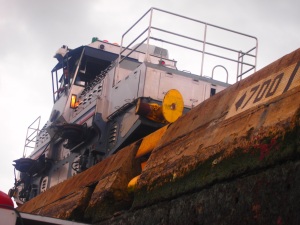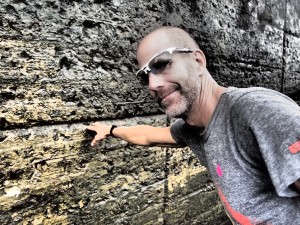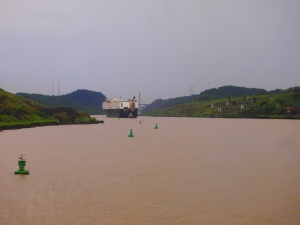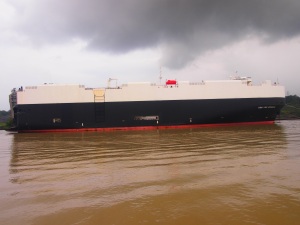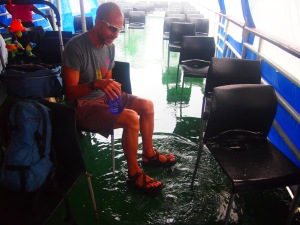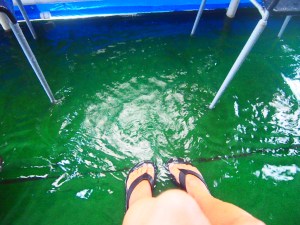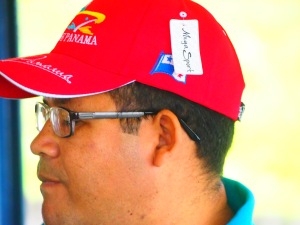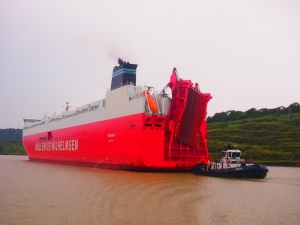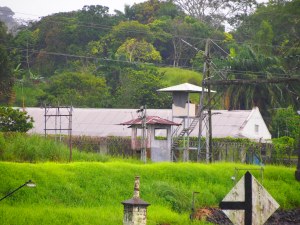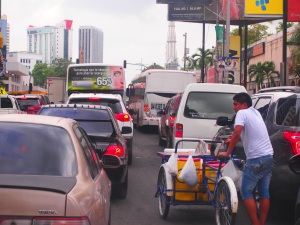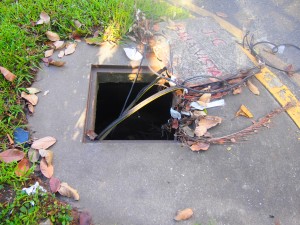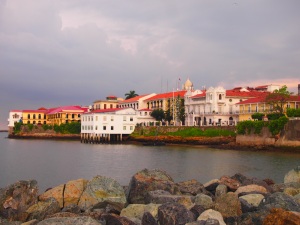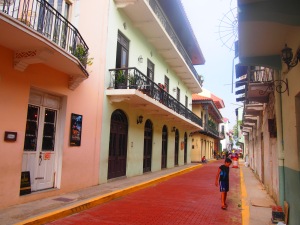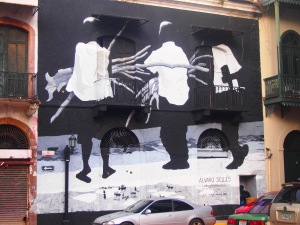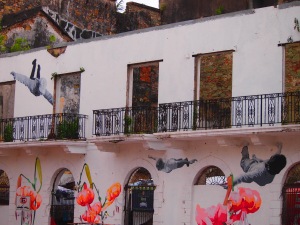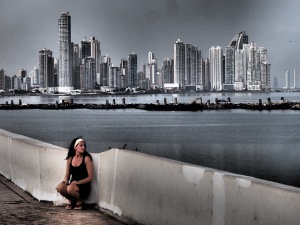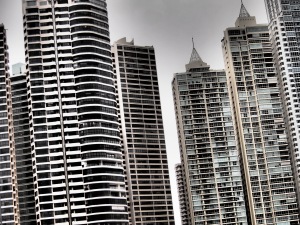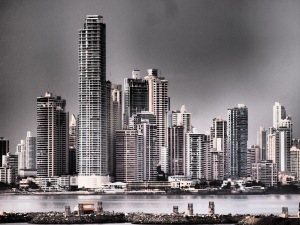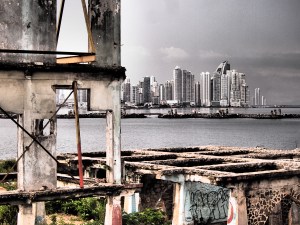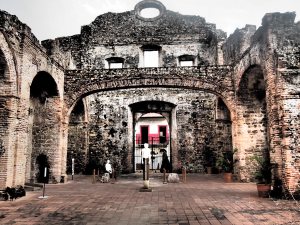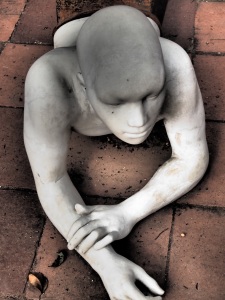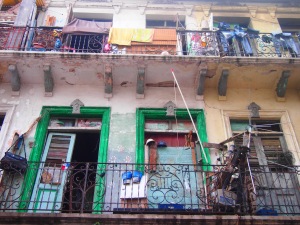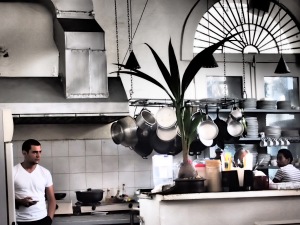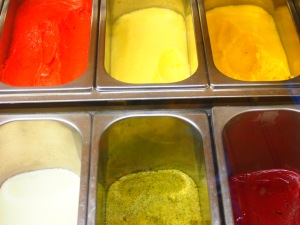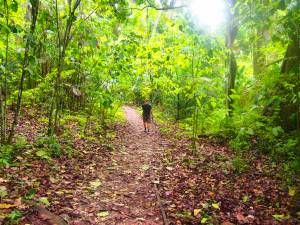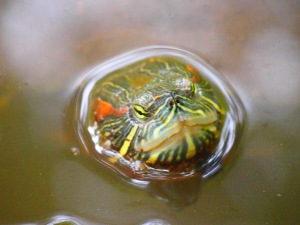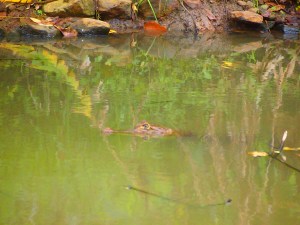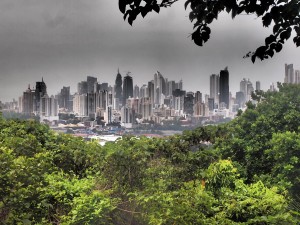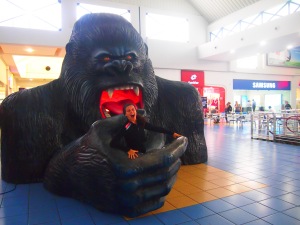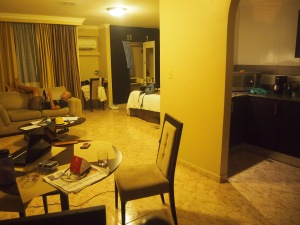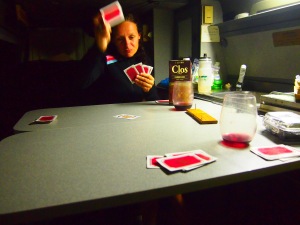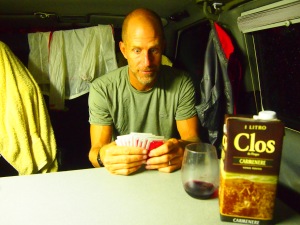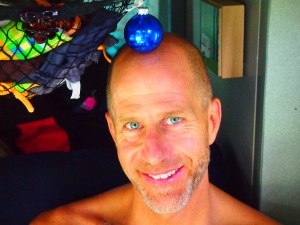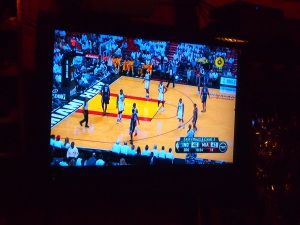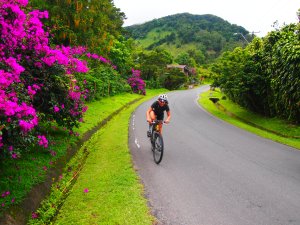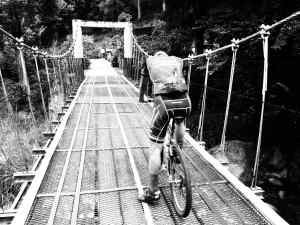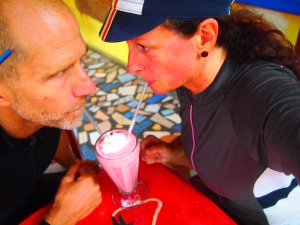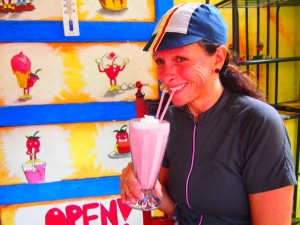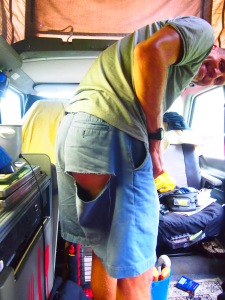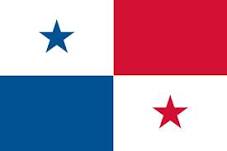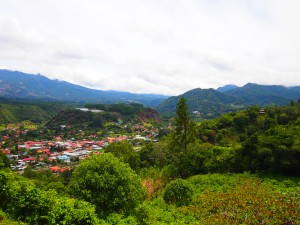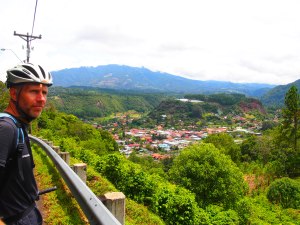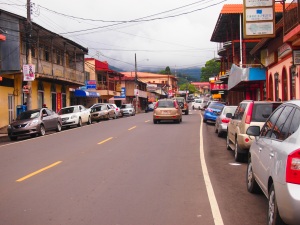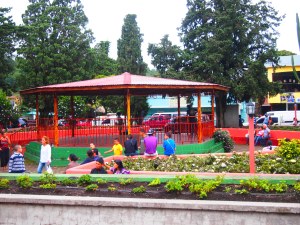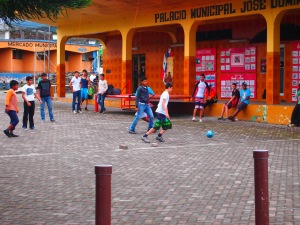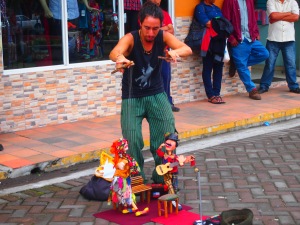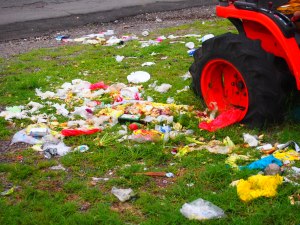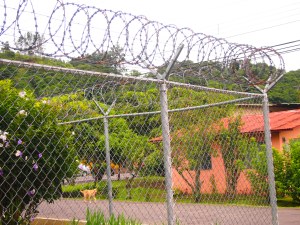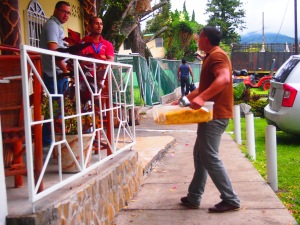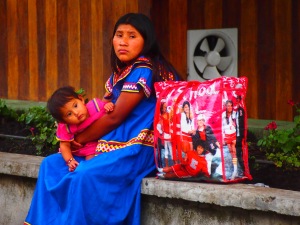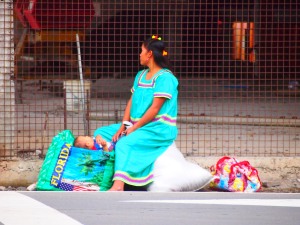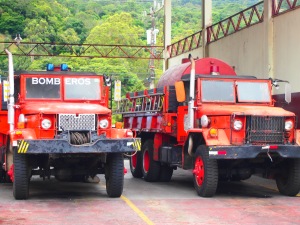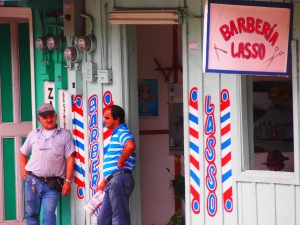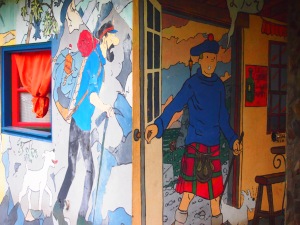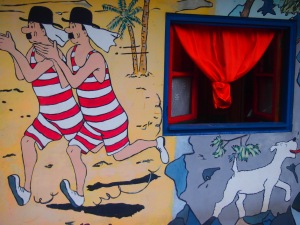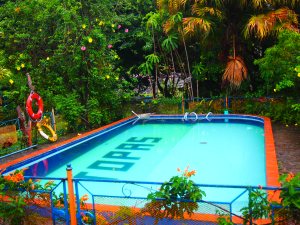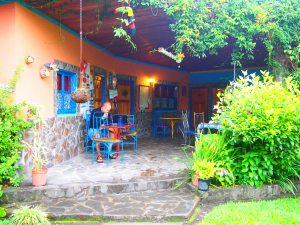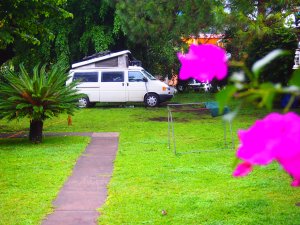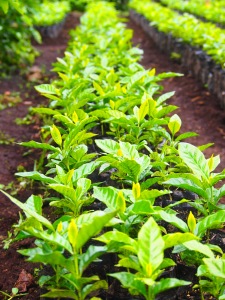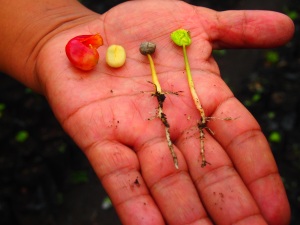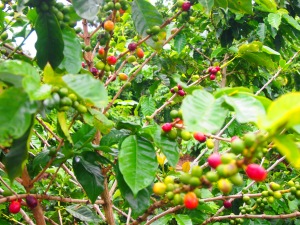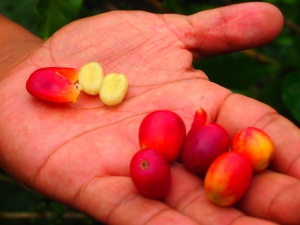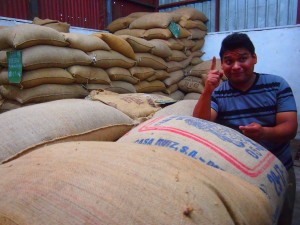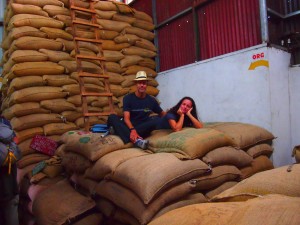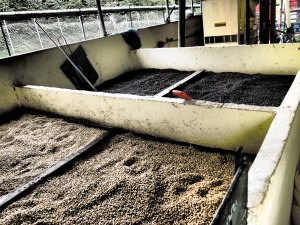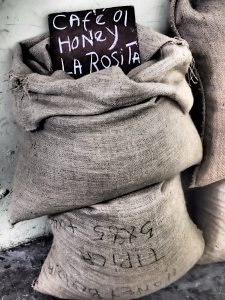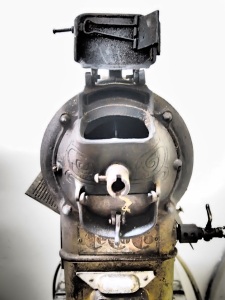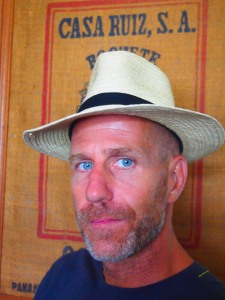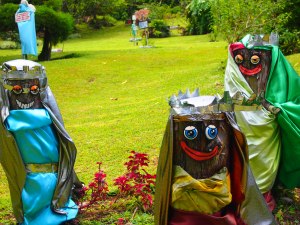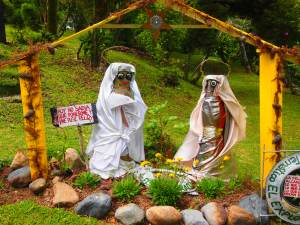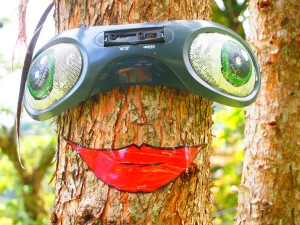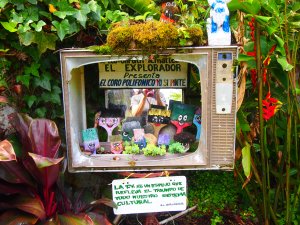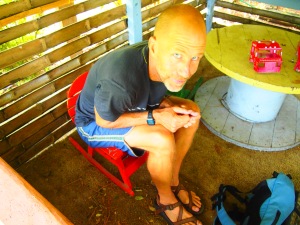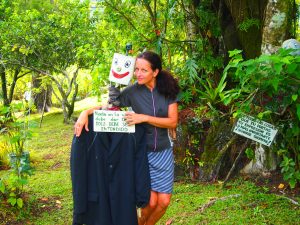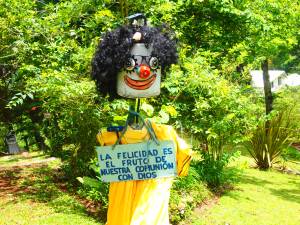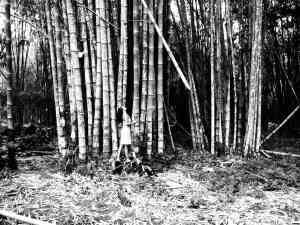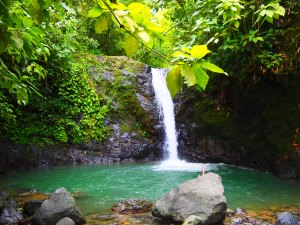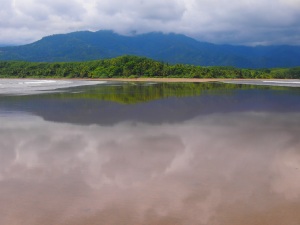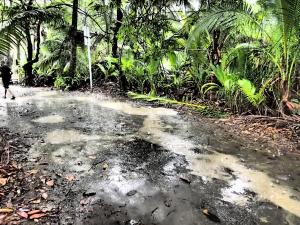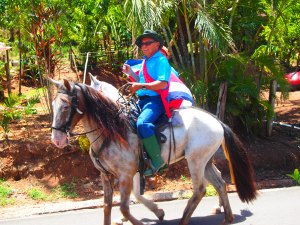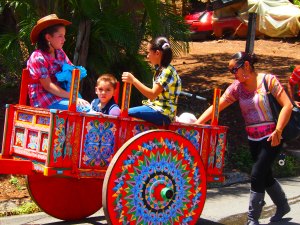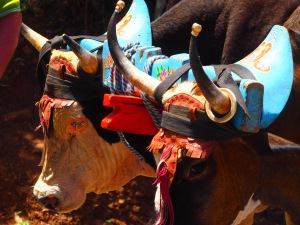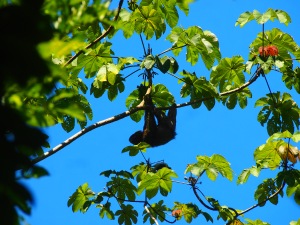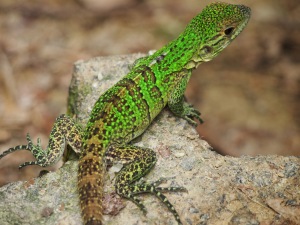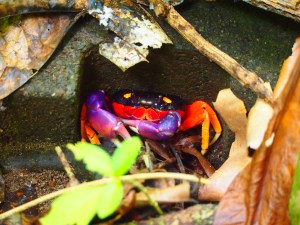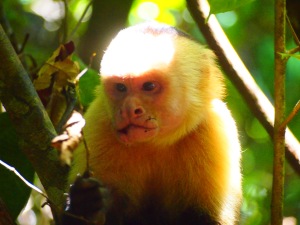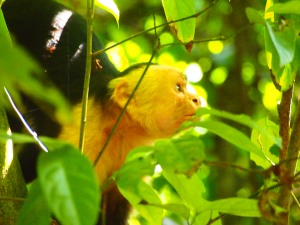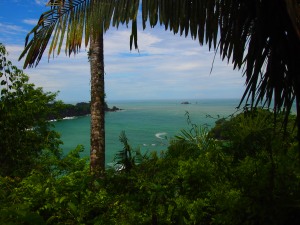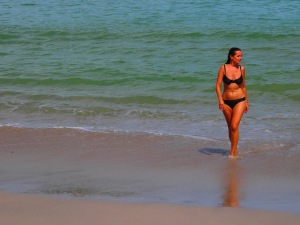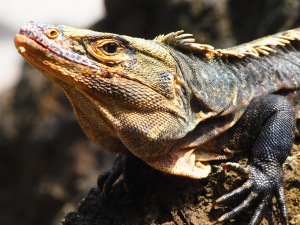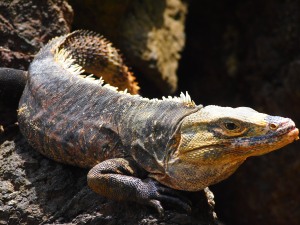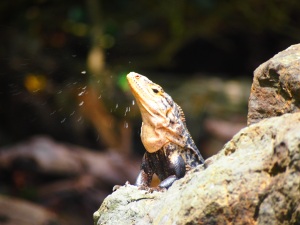For the next 4 nights, we will be in the San Blas Islands off the Atlantic coast of Panama. The 365 islands are home of the Kuna community.
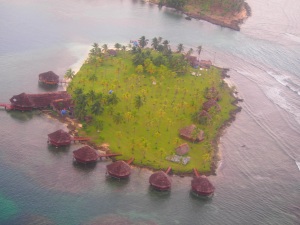
“Our” Island
On a side note, The government has given the Kuna communities lands (or islands) where they can prosper by growing and selling crop. They have invested in tourism by bringing foreigners to their beautiful lands and teach them about their culture while offering fantastic surroundings. Yup! Just like the Native American! Oh wait, no! They were given lands where nothing could grow and left with a huge challenge to succeed
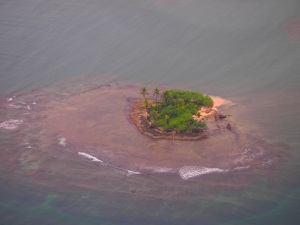
One of the 365 Kuna islands
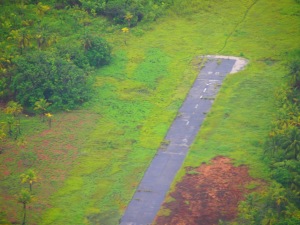
Tiny airstrip
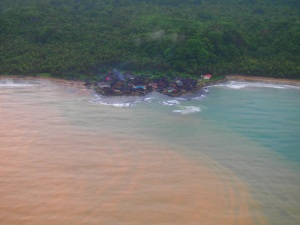
Some of the communities choose to leave on land bordering the Darien Gap. No roads go there
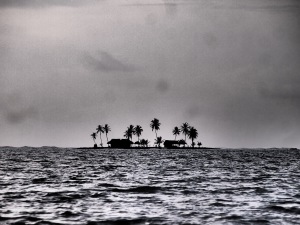
Some islands are tiny
There will be no cell phone or internet. To get there we board a 6 am flights in Panama City. The plane is a 6 passenger planes and people, luggage and boxes of good are crammed in. The flight has been delayed for an hour because of weather conditions. The cockpit looks like the plane Amelia Earhart flew over the ocean in 1937 and she was never found again. I am getting a little nervous as we maneuver on the runway but not as nervous as the woman in front of us who starts crying. The pilot slides open the curtain and while driving the plane tries his best to console the girl. He offers the options to return her to the terminal. A few more words and laugh are exchanged and we go on. The flight was fabulous. We flew over the Darien gap and its dense lush vegetation trying to fathom how indigenous tribes can live in there…safely. We saw communities and tiny atolls lost in the ocean. Our first stop was on a small island and an even more than tiny runway. We then landed in another Kuna community where our journey continued with a boat ride to Yandup Island.
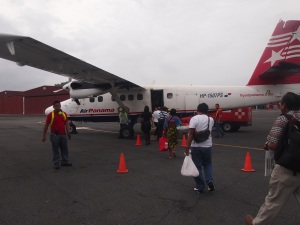
Boarding in Panama City
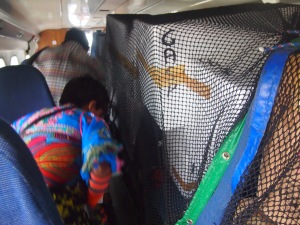
More cargo than people
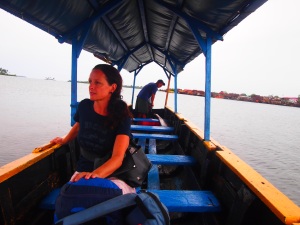
Out final stretch by boat
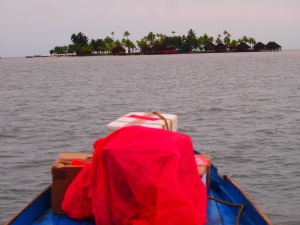
Getting closer
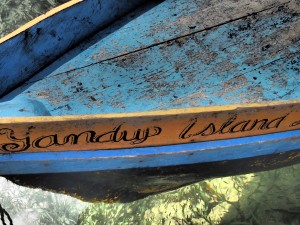
We have arrived at Yandup Lodge
Here we were. An island as big as some American backyards. It takes about 1 minute to go around it by foot. Our hut is built on the water. It is fantastic! Do not come here to work things out if you have marital problems, there is no escaping or avoiding the other person!
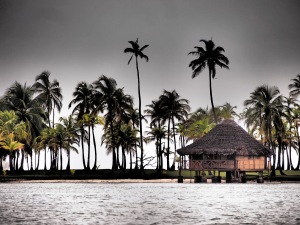
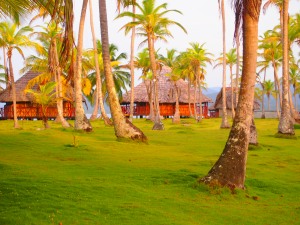
Standing in the middle of the island
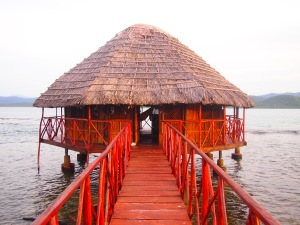
Our casa
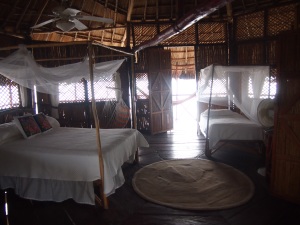
Charming decor
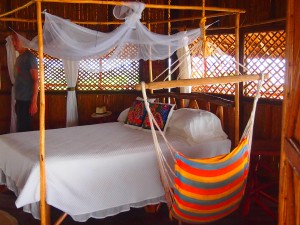
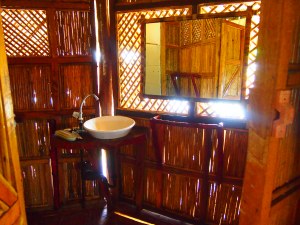
Semi outdoor bathroom
After a bit of snorkeling and sea sickness under a cloudy sky, we had a succulent local fish for lunch. Blanco, a Kuna member/host showed us around the mangrove and its inhabitant in the afternoon. There are 3 types of mangroves (white, red and black). The ones we were observing is red mangrove and have multiple purposes in the Kuna community. It is used as a medicine to cure blood diseases. At age 5, little Kuna boys start showering with the leaves to help them become strong fisherman. (Blanco says, it helps bring up more fish). They also used the wood of the red mangroves to build hammocks which are placed 3 meters deep in the ground. On those hammock the dead is placed with all his belonging, shoes, glasses, clothing…etc. More mangrove branches are piled on top as well as dirt forming a little mount. They say: “Mother earth is pregnant with a child”. Small houses are then built on top to protect the edifice of the rain. I believe we will get a chance to visit one of the cemeteries at a later time.
Now, we are catching starfish, sea cucumbers and sea urchins. The sun is picking and the islands are magnificent.
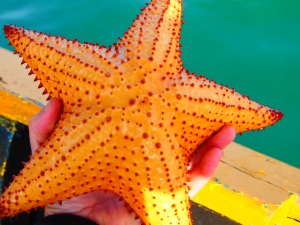
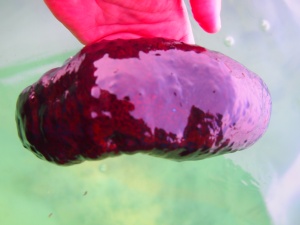
Sea cucumber
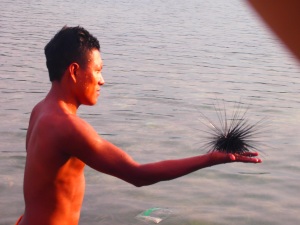
Black urchin
One of the many Kuna community is located a boat ride from our island. When you arrive on a Kuna island, you MUST seek the chief of the island, ask permission to visit and pay him a $10 fee. Blanco took us there for a little local history. 3000 people live in this community. Shortly after our arrival, the rain started to pour and naked kids were running in the streets laughing their heart out. All were waving at us screaming “Hola” and checking us out. The “streets”are made of dirt and the homes are made out of palm leaves and close to each other. Homes last 10 to 20 years. The cheap homes last 2 to 5 years. Blanco recalls many stories of homes burning or collapsing when storms come in. Kuna people are very proud of their community and they strive in keeping their independent way of life. We peek at the home where the Kuna congress meets. It is a large palm house and you need to wear pants to enter. The chief always lies in the middle of the room, in a hammock. The hammock is sacred in the community. The village has a clinic, 3 churches, a soccer/basketball field, a school and a police station. Women wear the traditional outfit made with molas. Molas a square of fabric with patterns hand sewed together. You can use those squares to make dresses, pillow cases, or decorate walls. These fabrics are cherished by tourists who come here to buy bags of molas.
As we walked down the streets, I can see many people on their cell phones, chatting and texting. I was told that if you go in the center of their community, you can get internet!
Their economy centers around the harvest of coconuts which they sell mainly to Colombian ships that sail in the region. Coconuts are traded for clothes, food or accessories such as sunglasses.
Another aspect that catches the attention of tourists is the high incidence of albinism in the Kuna territory. Experts attribute this to the fact that they rarely marry outside their community. Children of the moon, as the albinos are called, are revered and treated as special people.
By now the streets are just mounds of mud and mosquitoes are having a feast on my legs. Time to return to our island for another fresh fish/crab/shrimp dinner.
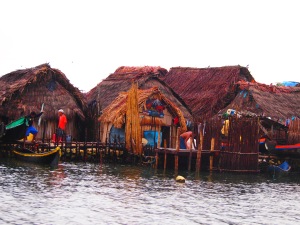
Approaching the Kuna community
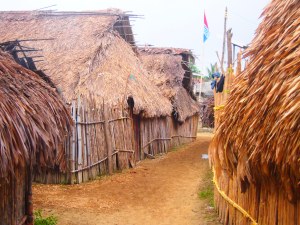
Kuna homes built close to each other, separated by strips off dirt
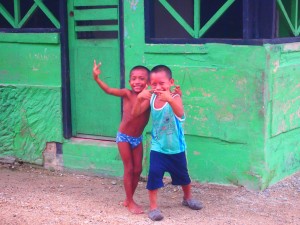
Kids enjoying life
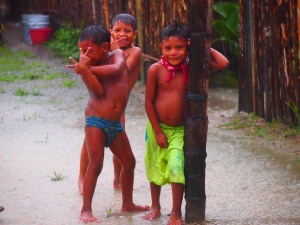
Playing cool
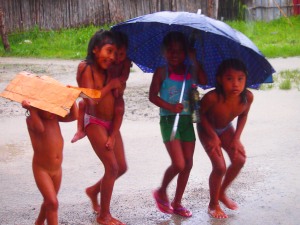
Streets are rivers and kids keep playing
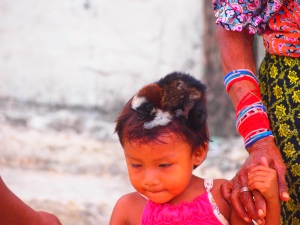
Little girl seen always carrying a baby monkey on her head
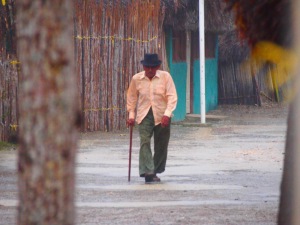
Old Kuna man
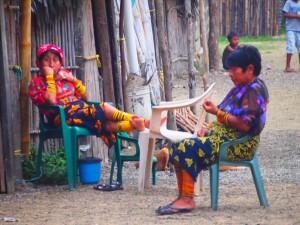
Kuna women chilling
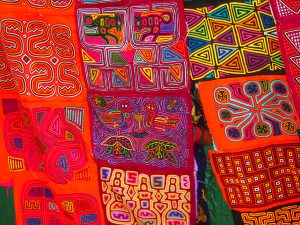
Molas made by the local women
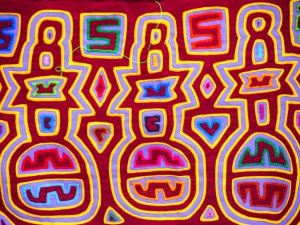
One design of a mola
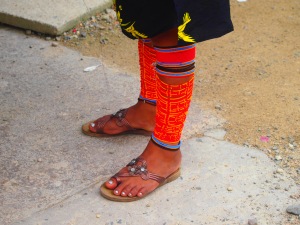
Women wear bracelets around their arms and ankles called chaquiras
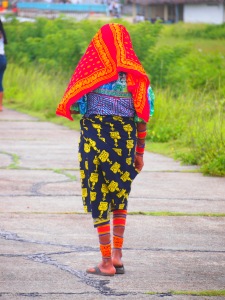
Kuna woman wearing the traditional skirt, molas and red scarf
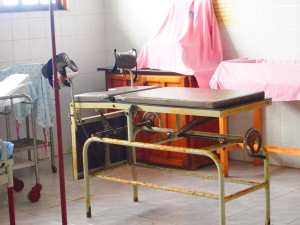
Maternity ward at the Kuna hospital
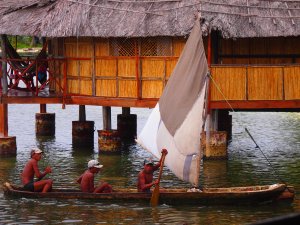
Fishermen arriving to sale their catch
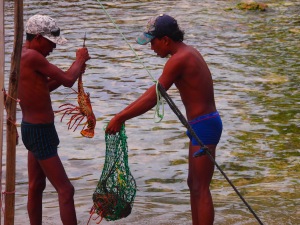
lean and fit Kuna fishermen
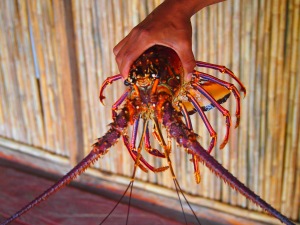
Dinner
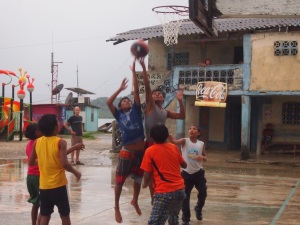
Of course there is a basketball court and a soccer field. I think DQ wants to play!
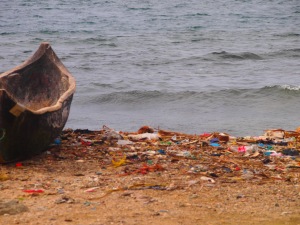
It is still Central America and the garbage is present everywhere
For the Kunas the land is the mother of all things. She is the guardian of all that exists and represents the spirit, the strength and the vigor of the Kuna culture
Yesterday, a child has died in the Kuna community. He died from an asthma attack. (the clinic can treat simple illnesses but can not place people on respirators if their respiratory system fails). After a death, the child is washed and dressed in his best clothe. For 30 hours members of the community chant non stop about spirits. During that time others go to the cemetery and dig a hole 3 meters deep and the length of the child. The body is then transported by boat (in a hammock hooked to a branch) to the cemetery. The hammock is lowered down the hole but cannot touch the earth. Red mangrove is then used to make a shelf over the body where all the person’s belongings are deposited. Then people fill the hole with dirt forming a little mount at the surface, meaning that mother earth is pregnant with a child. A string is then threaded from the little mound of dirt to a river representing the umbilical cord and will be cut the next day showing that the body is ready to go up to the sky. This is the 4th level of the spiritual life and the last one. People who have sinned during their life are unable to reach the sky and stay on the ground with the snakes. Blanco explains that people do not say goodbye to a person who has died because they will see them “shortly” when they die and meet them in the sky.
First level: Living in the wound of the mother for 9 months
Level 2: Growing up
Level 3: Dying but still being connected to mother earth by a cord
Level 4: Cutting the cord and going up to the sky
(I was not allowed to take picture in the cemetery)
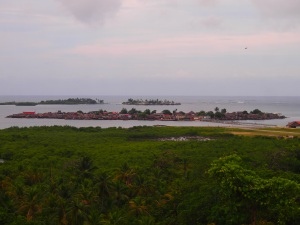
View of the Kuna Community and Yandup Island from the cemetery
The Kuna have many rituals and one of them is the cutting of a girl’s hair when she reaches maturity and is “available” to procreate. Therefore you can see most women wearing short hair which is very different from all the other Central American countries we have visited where long hair is cherished among women young and old.
One of the most striking practices is the fact that their young do not receive their names until they reach puberty. Until they reach puberty, the Kuna women are called by a nickname
My favorite spot here at the Yandup Lodge is a grassy spot in the middle of the island where I slowly turn 360 degrees while always looking at water! It is a weird feeling to be standing on this tiny island. We have skipped a couple morning of snorkeling to just hang out on the island by ourselves, relaxing on the little white sand beach. We acknowledge to each other the great satisfaction of doing nothing without being bored. (No cell, internet or movie theaters). The owner and the staff are Kunas and the women wear the traditional skirt and molas while working.
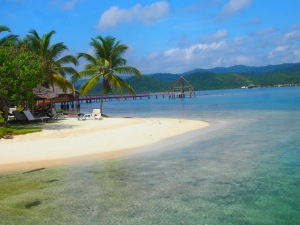
“Our” island beach
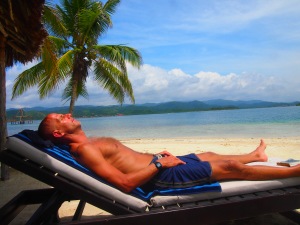
Dan working on his “non cycling” tan
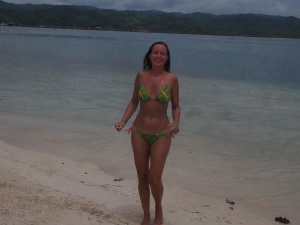
Remember the story about the tiny bikini back in Costa Rica. Here it is!!
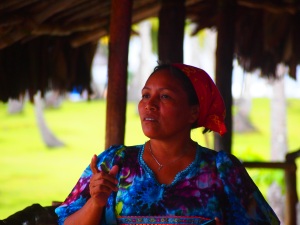
Kuna woman who works on the Yandup Island
Our last night sleeping in damp sheets! Early morning the sun replaces the rain and thunder of the night. A minuscule 8 passenger planes takes off from the Kuna community as kids are walking by to go to school. Women are carrying rod iron pots. They are filled with cream corn, a government program to feed kids at school. At lunch they get beans. All the children look lean and healthy and are smiling. The little one are all wearing red shorts and a white tee shirt. It must be gym day. I notice how spotless the kids’ clothe are despite the fact that no one owns a washing machine or dryer on the island.
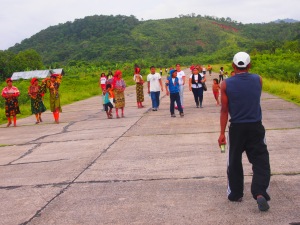
That is the airstrip we landed on. It is used as a playground/street/hangout by the community and cleared away when a plane come in
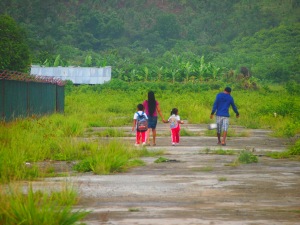
Blanco our host, helps his wife bring the cream of corn to the school accompanied with his 2 of his 4 children
We land in Panama City and immediately take off for David where we will have a short wait before flying to San Jose Costa Rica.
